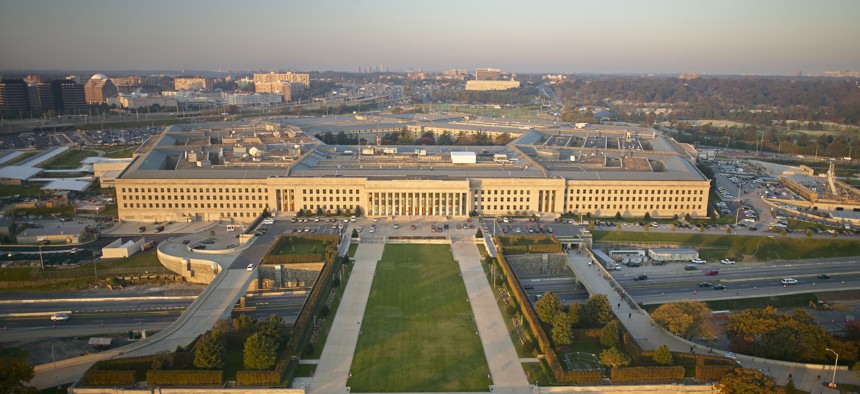Ball Aerospace, Loft Federal and Microsoft to Team on Space Development Agency Program

Westend61/Getty
The companies are supporting the Space Development Agency’s National Defense Space Architecture Experimental Testbed program, which will begin launching satellites in 2024.
Ball Aerospace, Loft Federal and Microsoft are working together on the Space Development Agency’s National Defense Space Architecture Experimental Testbed program—NExT—to carry 10 satellites with experimental payloads into orbit, according to an announcement on Tuesday.
Ball Aerospace is the primary contractor for SDA’s $176 million contract, which was announced last October. The project kicked off in December and the satellites are expected to begin launching at the end of 2024. According to the announcement, NExT will “demonstrate warfighter utility of emerging mission partner payloads prior to potential incorporation in future tranches.”
Specifically, Ball Aerospace will lead the payload and spacecraft integration and testing. Loft Federal—a new subsidiary of Loft Orbital—will perform spacecraft integration and full spacecraft verification testing to make sure it meets mission requirements and operational needs. Loft Federal will also procure commercial launch services, manage the launch and operate the constellation on orbit. Microsoft will provide cloud and secure ground station infrastructure as well as productivity solutions.
“It’s a great collaboration because each of our companies has these different unique skill sets,” Steve Kitay, Senior Director of Microsoft Azure Space, told Nextgov. “And I think that’s what’s really exciting to me is that the Space Development Agency is embracing these commercial technologies to help them address their needs much more rapidly.”
Loft Federal will use its turnkey satellite platform consisting of Longbow, its satellite bus; the secure hub, a variation of its modular payload interface designed to meet national security needs; Cockpit, its software for automated mission and satellite operations, and will operate the constellation.
Microsoft will provide its Azure Orbital Ground Station and its Azure Government cloud—which offers secret and top secret level accreditation needs—to provide a secure cloud environment for the agency to perform its mission. It is also providing Microsoft 365 productivity tools.
Kitay noted that space cybersecurity is “really important,” and added that while data centers are important to move data quickly across a network and then process the data and gather insight from it, ground infrastructure is important too.
“The ground infrastructure is critically important to how you support those safe space systems and how you move data, how you’re able to draw insights from the data using capabilities, for instance, like artificial intelligence and machine learning, because there’s such large amounts of that and the cloud provides a platform to do it securely and very rapidly,” Kitay said.
“I think SDA is really at the forefront here and trying to involve and take advantage of the commercial supply chains and the commercial products that already exist,” John Eterno, general manager of Loft Federal, told Nextgov.
According to Eterno, the agency is not looking to spend a billion dollars for one spacecraft. Instead, SDA is looking to leverage the commercial supply chain to fulfill its needs.
This is the first time SDA and the Space Force will operate government satellites with Microsoft Azure Orbital Ground Station.
According to SDA, NExT is not part of the NDSA Tranche architecture—a mesh network of space vehicles providing a “resilient, low-latency, high-volume data transport communication system.” However, NExT will also demonstrate low-latency data transport in addition to beyond line-of-sight command and control. Furthermore, NExT will explore the Tranche 1 Transport Layer infrastructure to “field and connect” more space vehicles with different mission payload configurations.
“NExT is an exciting program that has a lot of tie-in with our mission partners and will help to advance future tranches of the National Defense Space Architecture,” Derek Tournear, SDA director, said in the October announcement.
According to Kitay, NExT demonstrates how industry can help the government.
“It’s giving them a whole ground infrastructure that they don’t have to build,” he said. “And they don’t have to own it, but they can scale it and leverage it, and have these resilient infrastructure to be able to command and control spacecraft, take data down, very rapidly process and store that data and then ultimately derive insights from that to inform their end customers, and they can scale this up, they can have the necessary levels of security when we integrate it with our government clouds to meet their stringent mission applications.”






